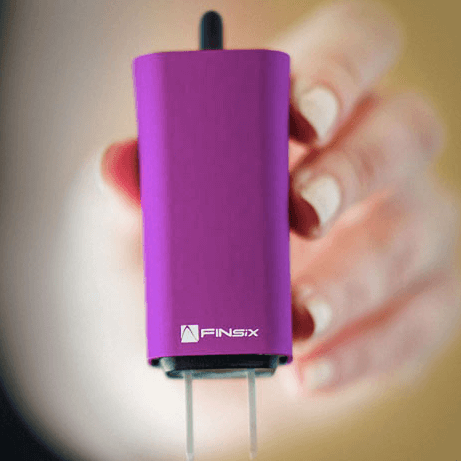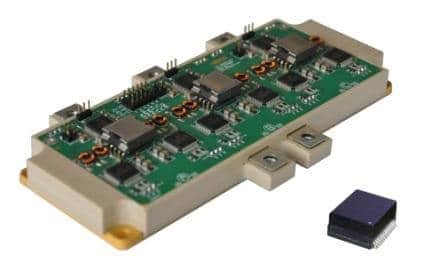And the prophecy will (most likely) become true…
We (and some other blogs) wrote a lot about the laptop and consumer charger market. We tried to raise awareness and convince you that this trend is a main trend.
Although the market and supply is not going as fast as we would like it to, the market is moving.
There is activity around smaller and better laptop and smartphone chargers. As the battery market has not made the breakthrough to leave us with weeks of battery, technology relies on power electronics engineers to add to smartphones, tablets and laptops some mobility through their chargers.
Dart from Finsix, and Zolt from Avogy are now on the market, and you can buy both.
So now we know more about those two chargers that were much expected.
We have seen teardowns of the Zolt, and were (you probably were, too) disappointed to see that they used Silicon Carbide MOSFET. Problably supplied by Cree (which, in the meantime, has spinned-off its RF and Power business units, renamed the new entity Wolfspeed, the later being acquired by Infineon…).
After giving it a closer look, FinSiX Dart does not feature GaN device either. It does not even feature the VHF (30Mhz) they talked about and that the whole industry was expecting.
What does this all mean?

Delta Innergie PowerGEAR 65
Our job is to predict the future without the use of a crystal ball (though using it is quite appealing sometimes…).
So let’s sit and think.
FinSix and the Dart
History :
- 2010: OnChip Power was created. The objective is to built and sell power converters operating at high frequency, for the LED and lighting market.
- 2012: OnChip Power is renamed FinSix. The company now welcomes investors and on board. Vanessa Green takes the CEO position and the strategy is redesigned from scratch. Together they define a new target: the charger market. The moto is clear, FinSix is self named worldwide leader in VHF power conversion technology (30 to 300MHz switching frequency)
- 2014 April: FinSiX launch a product on pre-sale on a crowdfunding platform Kickstarter. It’s a laptop adapter, much smaller and convenient than comparable power adapters. They claim it wil operate at VHF (more than 30Mhz) and will revolutionize the market. +500,000USD worth of Dart products have been sold in advance of production. Initially claimed delivery date is early 2015.
- 2016 July: Dart starts shipping to the first pre-sale customers. With more than a +18 months delay.
- 2016 September: The first discussions on the inside of the FinSix charger, especially it’s topology, design and frequency are starting on social networks.

FinSiX Dart
It seems that Dart finally has the following characteristics :
- Frequency of switching : 300Khz
- External max. temperature at full load : 80°C
- efficiency : 93.4%
- Digital control
- Topology : Multi-level resonant LLC half-bridge, using 4 Silicon MOSFETs
We are quite far from what we expected from FinSiX. There seems to be no GaN devices used in FinSiX charger, and there are quite far from the 30Mhz promised. On the other side, some discussions on social networks revealed a theory: maybe engineers team could not push the initial design in full production, as it’s very innovative and needs to fill in many safety regulations. So FinSiX developped a plan B, in order to have workaround and develop and alternative solution.
They delivered the product, it fits the first description and makes customer happy. It does not match the initial project design, this makes the engineers we are quite unhappy. But well, it works!
Avogy and the Zolt
Avogy is a start-up developping GaN-on-GaN power transistors. The technology is very expensive and at early stage. They created a parallel activity in which they developped a laptop charger called Zolt.

Avogy Zolt
We already talked a lot about :
But we still expect to see different devices in future revisions of this design.
According to us, using Silicon Carbide MOSFET makes no cost sense. It shoudl be easy to replace it with GaN IC (with integrated driver, to ease the building of the new design) and cost effective. It’s quite funny for a company developping GaN-on-GaN power transistors to produce SiC chargers.
Other start-ups :
The market is expanding now a little. Here are a few start-ups or companies in this field to watch closely :
Spin-off from DTU university, which is working on VHF converter topologies and targetting LED power supplies.
Based near Boston, this start-up was created in 2012 and seems to work both at device and system level. They have presented 200V and 650V GaN devices as well as proof of concept for a power supply design.
A Start-up out from the University of Toronto, and working on digital control solutions to drastically reduce sub-100W power supplies size.
We probably missed some of the start-ups in this field. If you want us to add one, please let us know.
Conclusion:
Laptop chargers are definitely the future for power electronics innovation, especially for Wide band Gap. TSMC confirmed that by building a production line for GaN power devices and confirming the target market is laptop, smartphone and tablet chargers.
We wish it could go faster, but it looks like device makers were a bit too optimistic when they announced their products to be fully ready and on production. GaN is still a new technology to apprehend and production is not yet mastered.
But it’s coming. And we confirm our prevision of $ 370M for GaN in 2020 with a third of it for these chargers.









